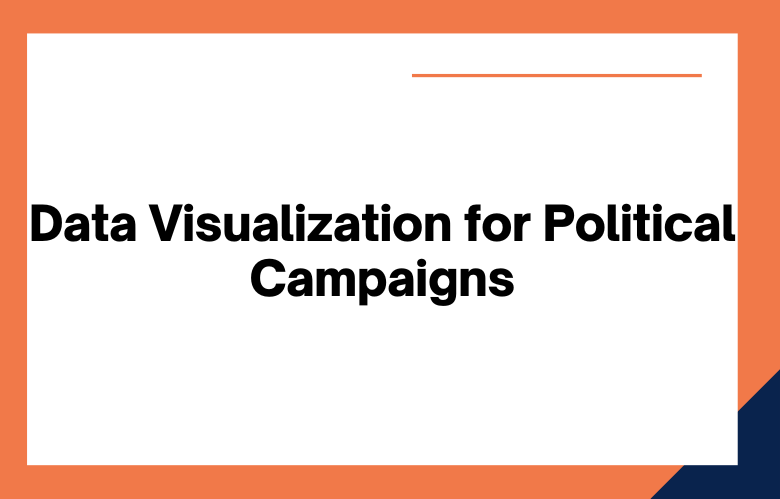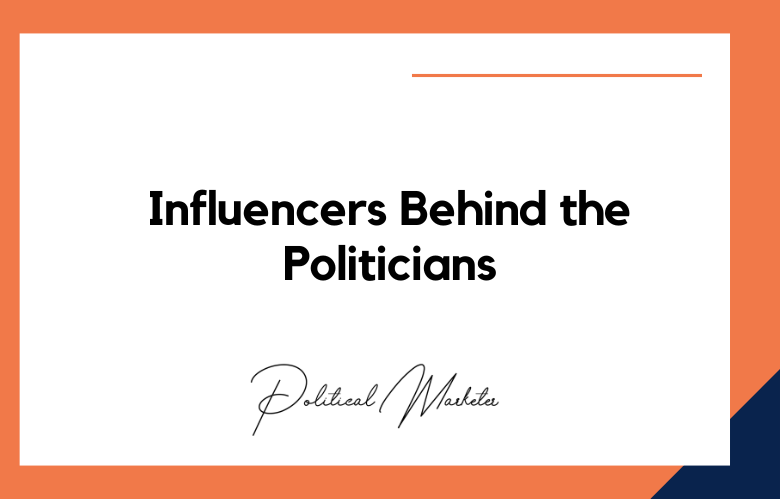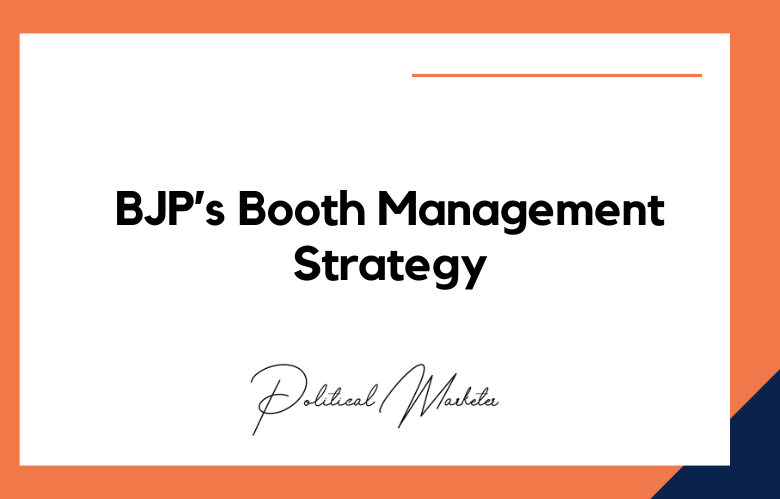Data visualization is a powerful tool that can be used by political campaigns to communicate their message and reach potential voters effectively. With the help of data visualization, campaigns can present statistics, trends, and other facts in visually appealing ways that will help them make a lasting impression on their audience.
We’ll discuss some of the best practices for using data visualization in political campaigns.
The Power of Data Visualization in Political Campaigns
Data visualization has become increasingly popular in the world of political campaigns. It’s a powerful tool for making data more accessible to understand and interpret, which can help politicians convey their message more effectively. But how do you use data visualization in campaigns? Here are some best practices for using data visualization to your advantage in politics.
Choose the Right Graphs and Charts
The first step is choosing the proper graphs and charts to demonstrate your message effectively. Basic bar charts, line graphs, and pie charts are great starting points as they are easy to understand by people who may have yet to gain any prior knowledge of data visualization. Graphs should also be chosen based on what kind of story they tell – if you want to show trends over time, use a line graph; if you compare different entities, use a bar chart; if you’re going to show proportions, use a pie chart.
Make it Easy To Read.
Your graphs should be clear and easy to read. It means keeping the design simple, avoiding unnecessary information or distractions, using consistent fonts and colors throughout all graphics, and making the labels legible. Always provide context for your pictures so viewers can easily make sense of them without reading through pages of text.
Focus on Relevant Information
When creating data visualizations for political campaigns, focus on relevant information that conveys the message you wish to send out. Too much information or too many visuals can be overwhelming or distracting – keep it concise but informative! Ensure that only relevant data is included in each graphic so that viewers can quickly understand your point without getting overwhelmed by too much detail or visuals.
Choose Your Focus Carefully
When creating compelling data visualizations for political campaigns, choosing your focus is essential. When developing visuals, keep your target audience in mind. For example, if you target younger voters, use more colorful visuals with simpler designs that appeal to them. On the other hand, if you aim to reach older voters, more detailed visuals with subtle colors may be more appropriate.
Make it Engaging
Data visualizations should always be engaging and captivating to grab your audience’s attention and draw them to your message. To do this, you should use visuals that have eye-catching elements, such as bright colors or interesting shapes. These visual cues help engage viewers and ensure they remain focused on your message. Additionally, animations or videos can help engage your viewers and keep them interested in what you say.
Keep it Simple
When creating data visualizations for political campaigns, it’s essential to keep things simple yet informative simultaneously. You want to leave viewers with a manageable amount of information or complex visuals; instead, focus on presenting only the critical points in an easy-to-understand format. Also, avoid jargon whenever possible since many people may need help understanding terminology related to politics or policymaking. Stick with universally understandable terms so everyone can follow along with what you are saying without getting lost in translation!
Choose the Right Tool
The right tool will depend on the type of data you need to visualize and how you want to display it. You may opt for something simple like an infographic or a chart or a more complex like an interactive map or 3D animation. The key is to select a tool that will allow you to communicate your message most effectively.
Collect Accurate Data
Data collection is vital in any data visualization project. Ensuring the data you collect is accurate is essential, as errors could distort your message and lead viewers astray from your intended point. Additionally, collecting data from reliable sources helps boost the trustworthiness of your message and increases its impact on viewers.
Make Your Visualizations Easy To Read
Once you have gathered your data, create the visualizations themselves! Keep these two things in mind when creating visualizations: readability and scalability. It means ensuring that all elements can be viewed clearly at various sizes (such as small screens or large monitors) and that there are no distractions from the central message of your visuals (i.e., avoid too many colors/textures).
Understand Your Audience
The first step in developing compelling data visualizations is to understand your audience. Who are you trying to reach? What do they care about? Knowing who you are will help ensure your data visualizations get the right people and message. Understanding your audience will also help you determine which type of data visualization is most effective for communicating with them.
Know Your Data
Before creating a data visualization, it’s essential to understand the underlying data. What does it tell us about our candidate or issue? Does it help us make an informed decision? Gather as much information as possible about your topic before starting to visualize it to understand better what needs to be communicated. This will also help ensure everything is clear when presenting the information visually.
Keep it Simple
Data visualizations should be accessible for viewers to understand at a glance. Avoid cluttering up the visual with too much information; keep it straightforward. Include only the most relevant information, and ensure that each element serves a purpose in conveying your message clearly and concisely.
Additionally, use familiar visuals so viewers don’t have to spend time deciphering what they’re looking at – regular shapes and colors will help them quickly identify critical points in your visualization.
Update Regularly
Political campaigns often change quickly, so data visualizations must remain up-to-date with developments and changes in public opinion or sentiment. Ensure all visuals are kept up-to-date as events unfold throughout the campaign season. Hence, viewers always have access to accurate information when deciding how they want their votes cast.
Data visualization can significantly revolutionize political campaigns, particularly as we move into the 2024 election cycle. Here’Here’s
- Enhanced Voter Insights: Data visualizations can help campaign teams understand complex voter datasets at a glance. By graphically representing voter demographics, previous voting patterns, and issues of concern, campaigns can tailor their messages more effectively to different voter segments.
- Real-Time Campaign Adjustments: Interactive dashboards can provide campaigns with real-time insights into how their strategies are performing. This allows for rapid adjustments in tactics, whether in response to voter feedback, opponent moves, or changes in the news cycle.
- More Effective Outreach Strategies: Visualization tools can identify geographic areas and communities with low voter engagement. This can help campaigns direct their resources more efficiently, focusing on door-to-door canvassing, town halls, or targeted advertising in areas where they can make the most impact.
- Improved Social Media Engagement: Analyzing social media data through visualizations can reveal trends and sentiments about the campaign or broader political issues. This can guide campaigns on where to focus their social media efforts, what content resonates with audiences, and how to engage effectively with constituents online.
- Persuasive Data Presentations: In an era of information overload, effectively communicating complex information is crucial. Visual data presentations can make campaign messages more compelling and memorable, helping to clarify positions on issues and the impact of proposed policies.
- Resource Allocation Optimization: Campaigns can use heat maps and other visual tools to optimize resource allocation. This includes not just money and time but also the deployment of volunteers and the timing and location of campaign events.
- Tracking Opponent Activity: By visualizing data related to an opponent’s campaigns and public reception, a campaign can gain strategic insights that help counter moves effectively and position their candidate more favorably.
- Forecasting and Scenario Planning: Advanced visualizations can help campaigns create scenarios based on current data trends. This helps in planning for various potential futures, better preparing for uncertainties, and developing flexible strategies.
Data visualization has had a significant impact on political campaign strategies in several key ways:
- Enhanced Understanding of Voter Demographics: Data visualizations help campaign managers and strategists understand complex demographic data at a glance. By visually representing voter preferences, behaviors, and demographics through heat maps, pie charts, and other graphical representations, campaigns can effectively tailor their messages to different population segments.
- Real-Time Decision Making: Real-time data visualizations allow campaign teams to make swift decisions based on current information. This could involve adjusting campaign messages, reallocating resources to critical areas, or responding to a rival’s campaign moves. Visualization tools enable rivals to interpret vast amounts of data, from polling numbers to social media sentiments.
- Targeted Advertising and Outreach: Campaigns can create highly targeted advertising strategies by visualizing data related to voter habits and preferences. Knowing which issues are most important in certain areas can help tailor local advertisements. This approach is often more effective and can be optimized continuously through ongoing data collection and visualization.
- Monitoring and Analysis of Competitor Activity: Visualization tools can also track and analyze competitors’ strategies and performance. This includes monitoring their spending, the geographical focus of their campaigns, and public reception. Visual representations help strategists quickly assess strengths and vulnerabilities in their own and their opponents’ campaigns.
- Enhanced Communication with Stakeholders: Data visualizatioopponents’ate more transparent communication with campaign donors and stakeholders by presenting information in an easily digestible format. This can help in securing additional funds or adjusting strategies by clearly showing what is working and what isn’t.
- Voter Turnout Efforts: Campaigns use geographic data visualization, which doesn’t identify historically low voter turnout areas. This information can be used to concentrate get-out-the-vote efforts, which are crucial for winning elections.
Thus, data visualization integration in political campaigns has become a critical component in the strategizing phase, enabling more informed decision-making and potentially leading to more successful campaign outcomes.
The Role of Data Visualization in Driving Political Campaign Decision-Making
Data visualization is crucial in modern political campaigns, acting as a critical driver in strategic decision-making. In an era of abundant data, the ability to distill vast amounts of information into clear, actionable insights can make the difference between a campaign that resonates with voters and one that falls flat.
Visual representations of data help campaign staff understand complex patterns and trends and enable them to communicate these findings effectively to stakeholders and the broader public. This introduction to the role of data visualization in political campaigns will explore how it enhances strategic planning, optimizes resource allocation, and ultimately shapes the tactical approaches that campaigns employ to engage voters and gain competitive advantage.
Conclusion
Several best practices should be followed for compelling data visualizations for political campaigns to be successful. Always keep your target audience in mind when designing visuals, and strive for an engaging presentation that captures their attention without overwhelming them with too much information or complex visuals.
Keep things simple yet informative, and avoid jargon so everyone can understand what you are saying without getting lost in translation! These tips can set up a successful campaign strategy utilizing data visualization techniques!
Data visualization is a powerful tool for political campaigns to engage and inform voters.
When used effectively, data visualizations can make complex issues more understandable and help voters see the importance of a problem.
By following the best methods outlined in this blog post, your campaign will be able to create data visualizations that are both informative and visually appealing.
If you need assistance creating data visualizations or developing other aspects of your campaign, our team of experts at Political Campaign Consulting can help.
We have extensive experience helping candidates at all levels of government-run successful campaigns, and we would be happy to put our knowledge and expertise to work for you. Contact us today to learn more about how we can help your campaign succeed.
Call: +91 9848321284
Email: [email protected]











